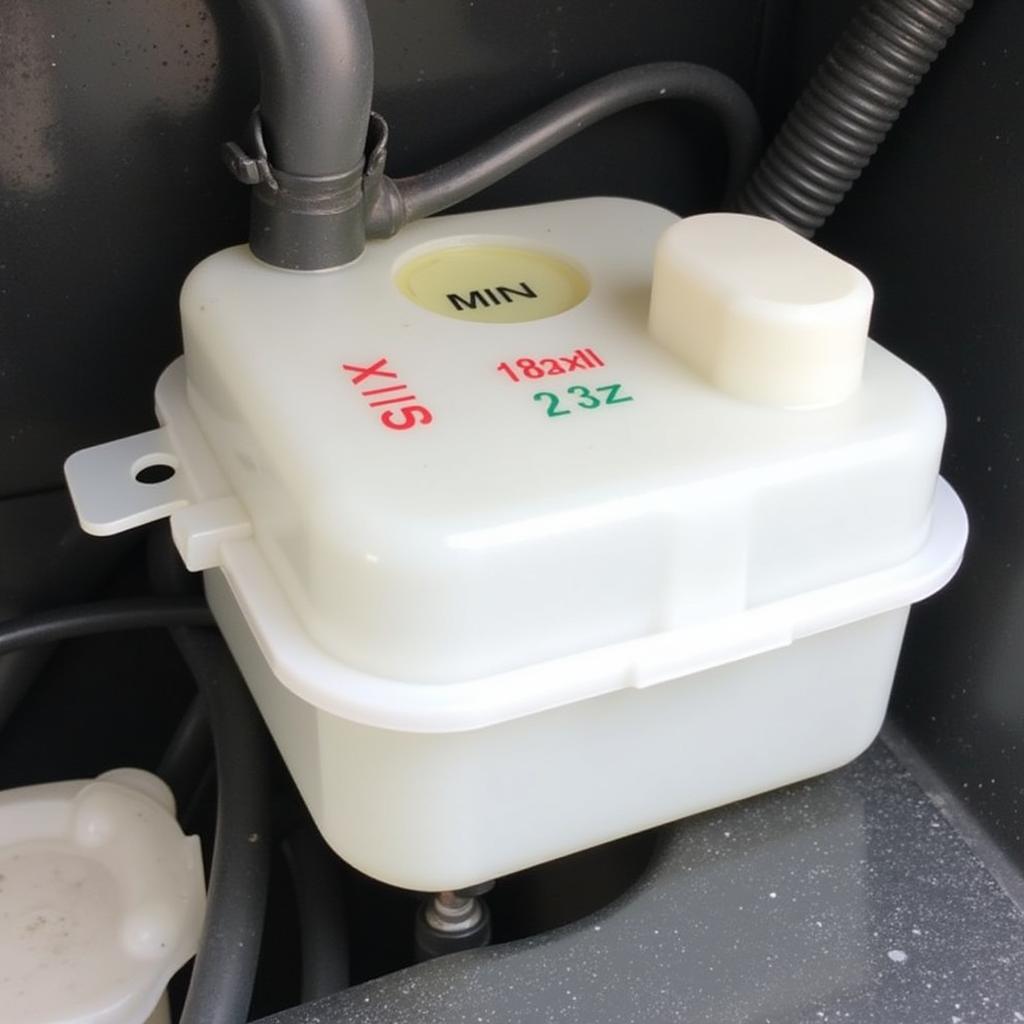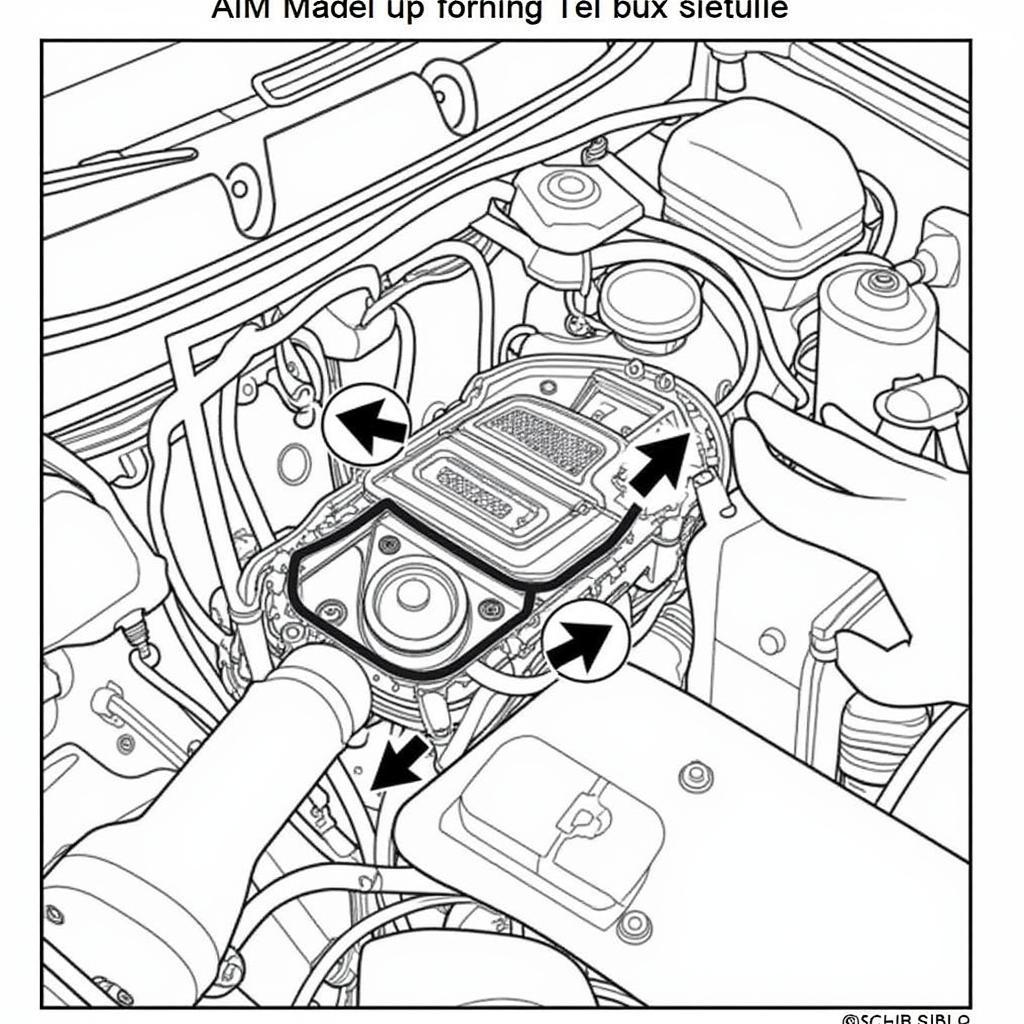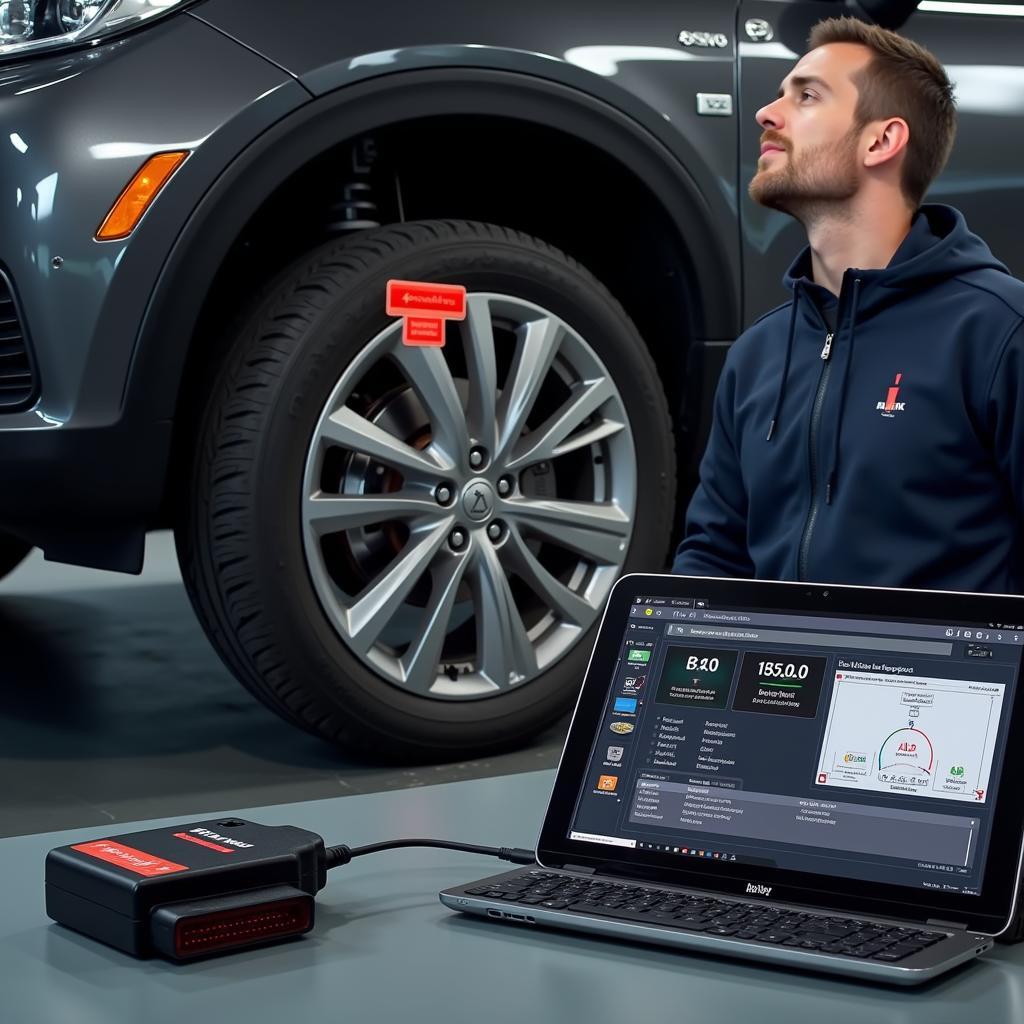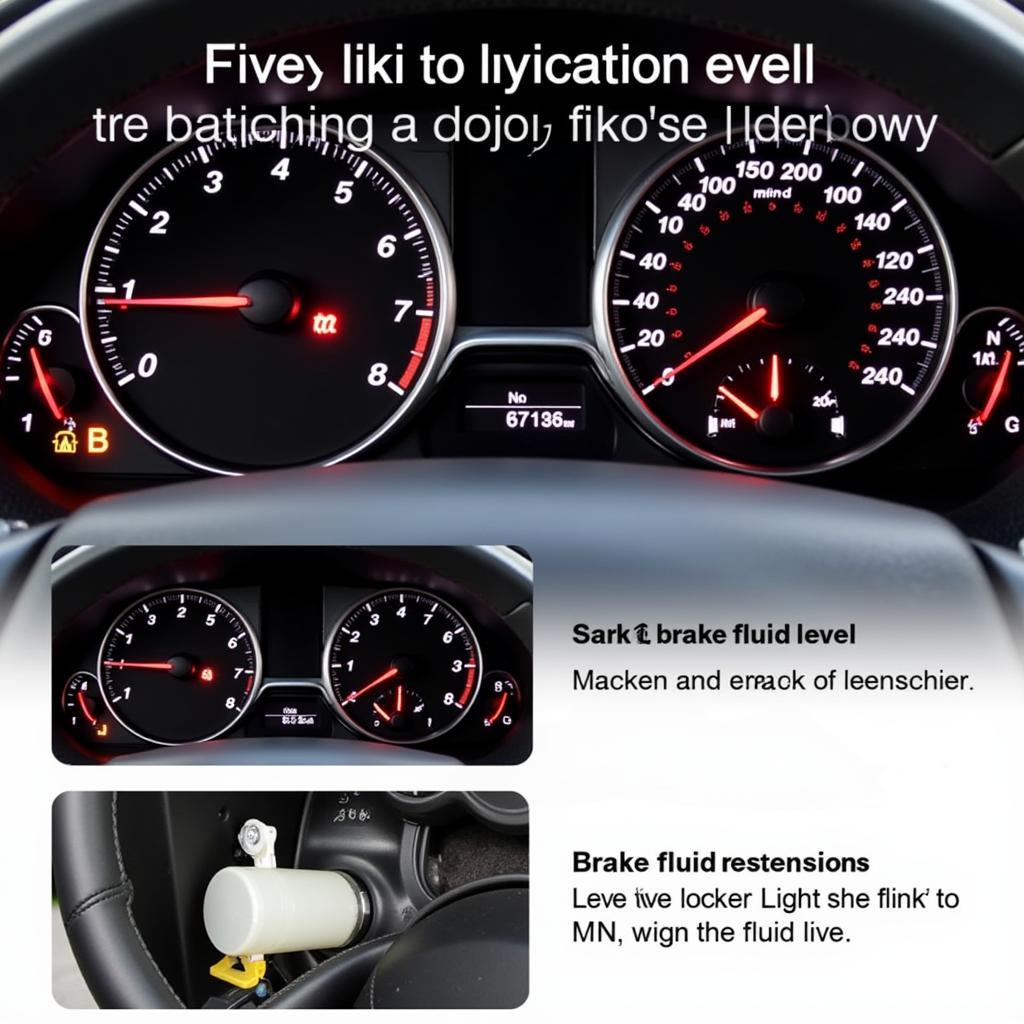If you’re driving your trusty 2003 Chevy Malibu and the brake warning light suddenly illuminates on your dashboard, it’s crucial not to ignore it. This light signals a potential issue within your vehicle’s braking system that requires immediate attention. While it might not always indicate a catastrophic problem, understanding the common causes and solutions can help you address the issue promptly and safely.
Common Causes of a 2003 Chevy Malibu Brake Warning Light
Several factors can trigger the brake warning light in your 2003 Chevy Malibu. Here are some of the most common culprits:
1. Low Brake Fluid Level
One of the most frequent reasons for the brake warning light is a low brake fluid level. Brake fluid is essential for transmitting force from your foot on the brake pedal to the brake calipers, ultimately stopping your vehicle.
How to check:
- Locate the brake fluid reservoir under the hood. It’s usually a translucent plastic container with a black cap labeled “Brake Fluid.”
- Check the fluid level against the “Min” and “Max” markings on the reservoir. If the level is at or below the “Min” mark, you’ll need to add more brake fluid.
What to do: If the brake fluid level is low, carefully top it off with the correct type of brake fluid specified in your owner’s manual. If you’ve recently had brake work done, there might be a leak, so it’s crucial to have the system inspected.
 2003 Chevy Malibu Low Brake Fluid Reservoir
2003 Chevy Malibu Low Brake Fluid Reservoir
2. Worn Brake Pads
Brake pads are designed to wear down over time. As you apply the brakes, the pads press against the brake rotors to slow and stop your vehicle. When the pads reach a certain level of wear, a sensor in the brake system triggers the warning light on your dashboard.
How to check: While visually inspecting the brake pads requires removing a wheel, you can often hear a squealing or scraping noise when applying the brakes if the pads are worn.
What to do: If you suspect worn brake pads, it’s best to have a mechanic inspect them and replace them if necessary. Driving with worn brake pads compromises your braking performance and can damage the rotors.
3. Faulty Brake Light Switch
The brake light switch is a small sensor located behind the brake pedal. It signals the brake lights to illuminate when you press the brake pedal. A faulty brake light switch can sometimes trigger the brake warning light, even if there’s nothing wrong with the braking system itself.
How to check: If your brake lights aren’t working correctly (either not lighting up or staying on constantly), it’s a strong indicator of a faulty brake light switch.
What to do: Replacing a brake light switch is a relatively simple repair that a mechanic can perform.
4. ABS Issues
Your 2003 Chevy Malibu is equipped with an Anti-lock Braking System (ABS), designed to prevent wheel lock-up during hard braking. A problem with the ABS system, such as a faulty sensor or control module, can trigger the brake warning light.
How to check: If the ABS warning light is also illuminated on your dashboard, it suggests an issue with the ABS system.
What to do: Diagnosing ABS problems requires specialized equipment. It’s best to take your car to a qualified mechanic specializing in automotive electrical systems for proper diagnosis and repair.
 2003 Chevy Malibu ABS Module Location
2003 Chevy Malibu ABS Module Location
What to Do When the Brake Warning Light Comes On
A glowing brake warning light should never be ignored. Here’s a step-by-step guide on what to do:
-
Safely pull over: As soon as you notice the brake warning light, safely maneuver your car to the side of the road and come to a complete stop.
-
Check the brake fluid level: Carefully open the hood and inspect the brake fluid level. If it’s low, add the correct type of brake fluid.
-
Assess the situation: Consider if you’ve recently had brake work done, noticed any unusual noises while braking, or if your brake lights aren’t functioning correctly. This information can be helpful when seeking professional assistance.
-
Seek professional help: If the brake fluid level is extremely low, you suspect a leak, or the warning light persists, it’s crucial to have your car towed to a trusted mechanic.
Remote Diagnostics and Programming: A Modern Solution
In today’s technologically advanced world, remote diagnostics and programming offer a convenient and efficient way to identify and address automotive issues, including brake system problems.
Here’s how it works:
- Connect your car: Using specialized equipment, a certified technician can remotely connect to your vehicle’s onboard computer system.
- Diagnose the issue: The technician can run diagnostics, read error codes, and analyze real-time data from your vehicle’s sensors to pinpoint the source of the problem.
- Provide solutions: Based on the diagnostic results, the technician can advise on the necessary repairs, whether it’s a simple brake fluid top-up or more complex component replacement.
- Remote programming: In some cases, the technician can remotely reprogram or update your vehicle’s software to resolve specific issues.
 Remote Diagnostics of a Brake System
Remote Diagnostics of a Brake System
Benefits of Remote Diagnostics and Programming:
- Convenience: No need to visit a repair shop physically.
- Faster diagnosis: Remote diagnostics can often identify issues more quickly than traditional methods.
- Cost-effective: Potentially save on towing and diagnostic fees.
- Expert assistance: Access to specialized technicians, even if you’re far from a dealership or repair shop.
Expert Insight: “Remote diagnostics and programming have revolutionized the automotive repair industry, especially for intricate systems like brakes. It empowers car owners with convenient, efficient, and often more affordable solutions.” – John Miller, Senior Automotive Engineer
Conclusion
Addressing the brake warning light in your 2003 Chevy Malibu is crucial for your safety and the well-being of your vehicle. While some causes, like low brake fluid, can be addressed with basic maintenance, others require professional attention.
Remember to prioritize safety by pulling over immediately if the warning light illuminates. Consult a trusted mechanic or explore the convenience of remote diagnostics and programming to diagnose and resolve the issue effectively.

